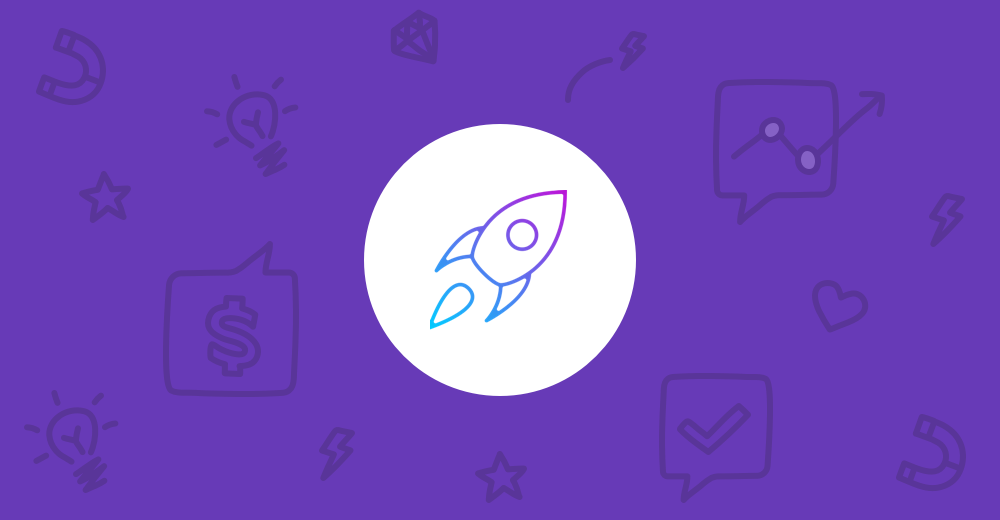How to Create Facebook Ads and Google Ads for Small Business
Sometimes it’s hard to bring in sales, and in those moments, every marketing dollar counts.
This is especially true if you run a startup, a small business, or you’re navigating an economic downturn.
As a general rule of thumb, you should always be looking for the least expensive way to bring in the most new customers.
But, we get it, maybe you’re not a marketing wiz or simply don’t have time to explore cost-effective advertising methods.
That’s why we’ve pulled together a quick guide, a cheat sheet if you will, of advertising ideas for your small business when every dollar counts.

We’ll go over:
- What a healthy advertising channel looks like
- How to measure if your advertising is performing
- And different advertising avenues that will help you attract new customers.
Let’s dive in!
But first, an introduction to performance advertising: How to set goals and measure if your advertising is working
Before we decide what advertising channels to use, we first need to decide what our parameters for “good” advertising are.
Cost-effective advertising is:
- Easily measured
- Easily targeted
- Easily maintained and adapted
- And easily tested.
Using these parameters, you should be able to assess any advertising opportunity.
We'll explain what these parameter mean below (or you can also skip to the next section, if you want to get straight to the part on recommended channels).
1. How and what to measure:
When it comes to measuring your advertising efforts, you should be able to easily track how much you're paying per metric. And these are the metrics you should care about:
- Impressions: how many times an ad was seen by anyone.
- Reach: how many people saw at least one ad
- Frequency: calculated as impressions divided by reach. This will tell you the average number of times any one person saw an ad.
- Clicks (or traffic): how many people visited your website or clicked on your ad.
- Actions: how many people did what you wanted them to do. Usually this means they made a call, gave you their email, made a purchase, or booked a job. This depends on what you set your goal as.
This also means you should set some goals so you have something to measure against.
Usually, you are going to set goals around the number of people you can reach and whether or not those viewing the ad are clicking on it or taking the action you would like them to take. The action may be providing an email, contacting your business, booking a demo or requesting a quote.
In technical terms: you want as much reach as possible, with a high enough frequency that your audience has seen your ad frequently enough to consider doing business with you, but not too high that you’re annoying them.
And you also want as many people clicking on your ads as possible. A high click-through rate (CTR) (the % of impressions that are clicked) will tell a smart advertising system like Facebook that your ad is relevant and interesting to those receiving it. Their algorithms will subsequently give you a lower cost-per-reach (CPR) and cost-per-impression (CPM), which ultimately results in a lower cost-per-action (CPA).

2. Targeting your advertising to the right people
Any ad you put out is a huge waste of time and money if it’s not correctly shown to your potential customer.
For example: Let’s say you sell plumbing equipment, and your brand is targeted towards men aged 22-35 years old without kids who work in the plumbing industry.
In this instance, it likely wouldn't be a good idea to sponsor the local high school fair, because a very small (if any) percentage of people who would see that ad would be in your target market, meaning it’s unlikely to result in any sales.
A better idea might be to run an ad on Google targeting searches for “plumbing supplies” and set your demographic targeting to exclude anyone who is not within the ages of 22 and 35, or who doesn’t identify as male.
It’s important to note that almost every ad you put out will be seen by some people who are not your potential customers, but your goal is to maximize the percentage who could be.
Modern advertising platforms often have many targeting options available to allow you to hone in on your ideal client profile.
Here are examples of some of Google's and Facebook’s targeting options:


A note on balanced targeting vs. broad audience sizes:
If you set your targeting parameters to be too specific, you run the risk of limiting the size of your target audience on your chosen ad platform. This is due to the limitations around the type of data they actually have.
The smaller your target audience, the more likely you are to have a higher CPA (cost-per-action). Conversely, the larger your target audience is, the less relevant and effective your ads will be, which also increases your CPA.
It’s usually best practice to find a healthy middle ground where there is a large enough audience size to be cost effective, but still targeted enough to be highly relevant to your audience.
3. Your advertising should be easily maintained and adaptable:
This means, if an ad isn’t working or needs to be updated, you should be able to turn it off or change it without consequences.
4. Testing your advertisements and the channels on which they run
Since most marketing these days is digital, the term “Digital Marketing” is a bit outdated. It's being replaced with “Performance Marketing” when referring to paid advertising since it’s primarily pay-per-performance (usually clicks). And that's the beauty of performance advertising, you can test and measure everything to make sure your advertising is getting the desired results.
With that in mind, for any ad you run, you shouldn't have to pay for everything up front. You should really only be paying for performance.
How do you test your advertising?
First, you look for signs the platform could work.
The first time you run an ad on a new advertising channel, like Facebook or Google, it’s not likely you’re going to get amazing results. Sometimes you will get good results immediately (and that’s great), but you’re only really looking for a sign that you could be a worthy channel. This way you have a good indication if it’s worth investing time into optimizing your targeting and creative (the actual ad itself).
For example: We’ve found that we need to spend ~$500 to test whether or not an advertising channel is worth investing time and money to improve. This is because we advertise business-to-business.
If you’re advertising as a business to other consumers, such as a residential window cleaner, you may be able to get away with spending as little as $50-$150 to test whether or not a particular ad channel can work for you.
When testing any new ad platform, there are two main considerations:
1. Test your targeting:
Create one ad, but test several different targeting criteria.
For instance, make one ad and test one geographic location vs. another, or an age range, interest, search term, etc.
All we’re trying to learn at this point is if any of the targeting works well enough to get the person viewing it to take an action (leave an email, make a call or a purchase, etc.) at a low enough cost-per-action.
This will determine if it’s worth spending our time to improve or refine the targeting.
The reason we use the same ad for each targeting criteria is because we need to be able to compare the targeting against each other. You won’t be able to tell which criteria performs best if you use multiple ads.
Be sure to have settings configured. This way you can track if the ad is working properly and can track an action like an email being captured or a purchase being made.
2. Test the ad creative:
Once we know it's possible to target an audience well enough, we want to find the best ad to send to them. At this point you will introduce different ads and find the ones that resonate with your audience, and result in a low cost-per-action. At this point you may. want to test things like the copy you use in the ad, the imagery, colors, etc.
Recommended advertising ideas for your small business when you need to make every dollar count
1. Pay per lead (ex: Google Local Services):
Platforms like Google Local Services is a cost effective way to get leads. You set the budget threshold and only pay Google when a lead has been determined.
If your industry is eligible for Google Local Services we recommend giving it a try.
One of the best ways to see results from this advertising avenue is to make sure your business is highly reviewed and rated on Google.
Search engines and people alike will look at reviews as a sign of trust, and Google Local Services will reward you by sending leads your way.
If you need help collecting reviews, NiceJob is a seamless small business solution.
Check out this article on Google Local Services for more details.

2. Retargeting ads for Google, Facebook and other platforms:
What is retargeting?
The cheapest and most effective way to get new customers from advertising is to target people who are already interested in your specific business.
To do this, we need to identify who these people are. A good start is to include anyone who has visited your website, particularly anyone that has indicated a high level of buyer intent. For instance, anyone who has visited a pricing page is would be considered a perfect. person to retarget with an ad.
What platforms allow retargeting?
Most modern ad platforms like Facebook (who also own Instagram & Whatsapp), Google, LinkedIn, Twitter, Pinterest, Quora and others, have these capabilities.
On Facebook, there are other forms of retargeting too. You can, for instance, retarget people who have watched a video you posted, or engaged with a post you made.
How do I enable retargeting?
To enable retargeting, you need to go into your ad account on whichever platform it is you’re trying to retarget from, and find your tracking code or pixel.
This must be placed on your website to be able to track visitors to then retarget with an ad on the desired platform.
We recommend reading their respective help articles or calling their support teams for detailed instructions on how to do this correctly.
To illustrate how this works, let's pretend you are looking to retarget website visitors with ads on Facebook.
So, once your pixel code is enabled, Facebook will begin to track visitors on your website who also have a Facebook account.
You can then create an audience in your Facebook ad manager who match your targeting requirements and have also visited your website.
The idea is that this person, who has already expressed some desire in your product or service, will be more likely to engage with an ad from your business in the future. And therefore more likely to close the sale.
Here's a graphic to illustrate how retargeting works:

Retargeting your customers
The tracking code/pixel should also be set up to track conversions; you’ll need to do this to measure the results.
By doing this, you will also be able to retarget people who have taken specific actions on your website.
In other words, you can run ads to people who have bought from you or used your service before!
3. Audience sharing on Facebook:
Similar to retargeting, on Facebook you can share audiences with other businesses. This means you can share an audience of your customers with a complimentary business in exchange for access to their audience.
This will allow both businesses to run ads to people who are most likely to be interested in your product/service.
For example, if you’re a carpet cleaning company, you may want to share audiences with a window cleaning company. You don’t compete with each other and both businesses likely serve the same target customer. Win-win.
A note on privacy: you won’t be able to see who is in the audience so that the customers’ privacy is kept secure.
4. Sponsored group posts on Facebook:
If you run a local business, get involved in local groups on Facebook.
If any of these groups get a lot of posts, consider reaching out to the group admins and offering to pay them to pin a post promoting your business in the group.
It’s a cheap way to have more people in the community find your business and it works well when it looks like leaders in the community are advocating for you!
5. Advertising using cost caps / bid limits:
Facebook, Google, Quora, and other platforms allow you to place cost caps or limits on how much you’ll end up paying per click or per action on any given ad.
If you know there’s a certain cost per lead that’s profitable, then you can set the limit and these platforms will find you as many leads for that price as possible.
The lower the cap, the less often your ads will run. This means you might not get as many leads as you would with a higher cap, but you will be guaranteed that each lead will be at a good price relative to the lifetime value of that lead.
6. Industry-specific marketplaces:
At NiceJob we get a lot of business from pay-per-click promotions on software marketplaces like Capterra, Getapp, and Crozdesk.
While we can’t advocate for the efficacy of any specific marketplaces for home service companies, you may want to look into ones like TaskRabbit or similar companies where you can run pay-per-click or pay-per-lead ads.
One of the reasons ads on these platforms perform well is because you know that the people clicking these ads are interested in the service you offer (otherwise they wouldn't be searching the marketplace).
For this reason, it’s important that when you get a lead from one of these marketplaces that you follow up immediately. Your chances of closing the sale are otherwise reduced because that customer will likely move on to a competitor.
7. Find a business to partner with and share the advertising costs:
If you can work with a complimentary business (carpet cleaners and window cleaners, for example), then you could potentially package your services into one deal and split the cost of advertising. That way, your cost-per-lead would technically be halved. If you have a very close relationship with another business you trust, this may be an option.
You don’t see this tactic used often among small businesses, but it is common for large businesses.
For instance, you’ll often see consumer brands like Doritos run ads themed around an upcoming new movie (like Star Wars). If they have similar target audiences, it’s cost-effective for both Doritos and the movie producers to share the costs of promotion.
So, if you can find an opportunity to do that in your own business, it may be a good idea to try.
BONUS: free advertising ideas
8. Make sure your business is listed everywhere
If your business can be found on Google, Yellow Pages, Better Business Bureau, etc, then very simply you’ll be seen more often by more people.
It’s also good for your search rankings to be listed in lots of places.
You can set up these listings yourself by finding any local listings sites and going to the major ones like Google My Business, or you can use a tool like Yext to do this one time for you.
9. Get reviews & referrals from your customers
If you can get your customers to advocate for you, that will be worth more than any advertising you could ever make.
The best way to do this is to have them leave you reviews on Facebook and Google. This is a powerful trust symbol that may be exactly what you need to get new customers to book with your business.
You can also try NiceJob’s new product Engage to help show off reviews and referrals to your website visitors, boosting credibility and conversions.
Get in touch if you have questions - we'd be happy to help
Hopefully this article gave you some clarity on how to approach your advertising.
If you have any questions, feel free to reach out to our Customer Success team, or speak with one of our growth experts if you have a Convert website.
Good luck out there!




